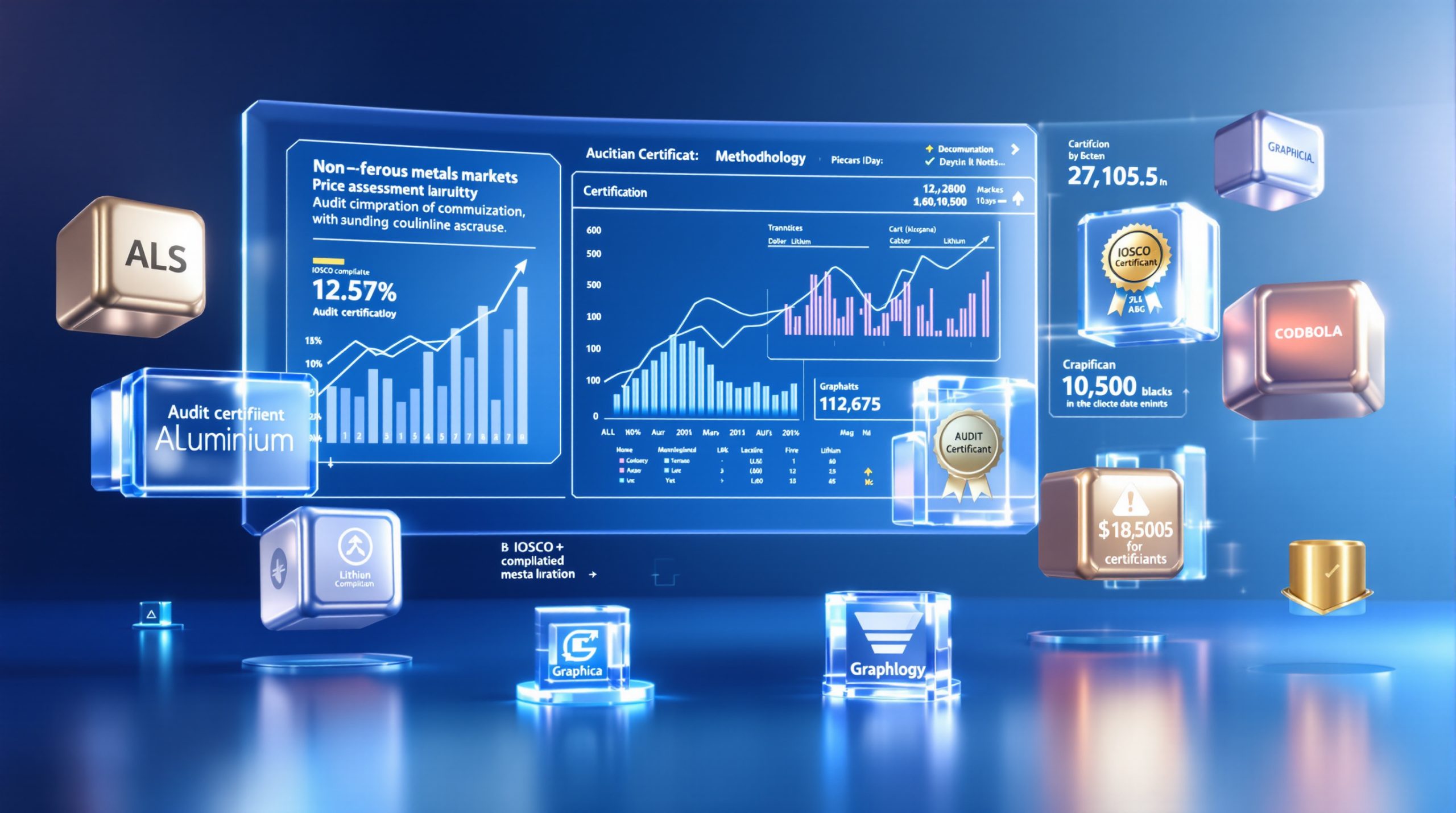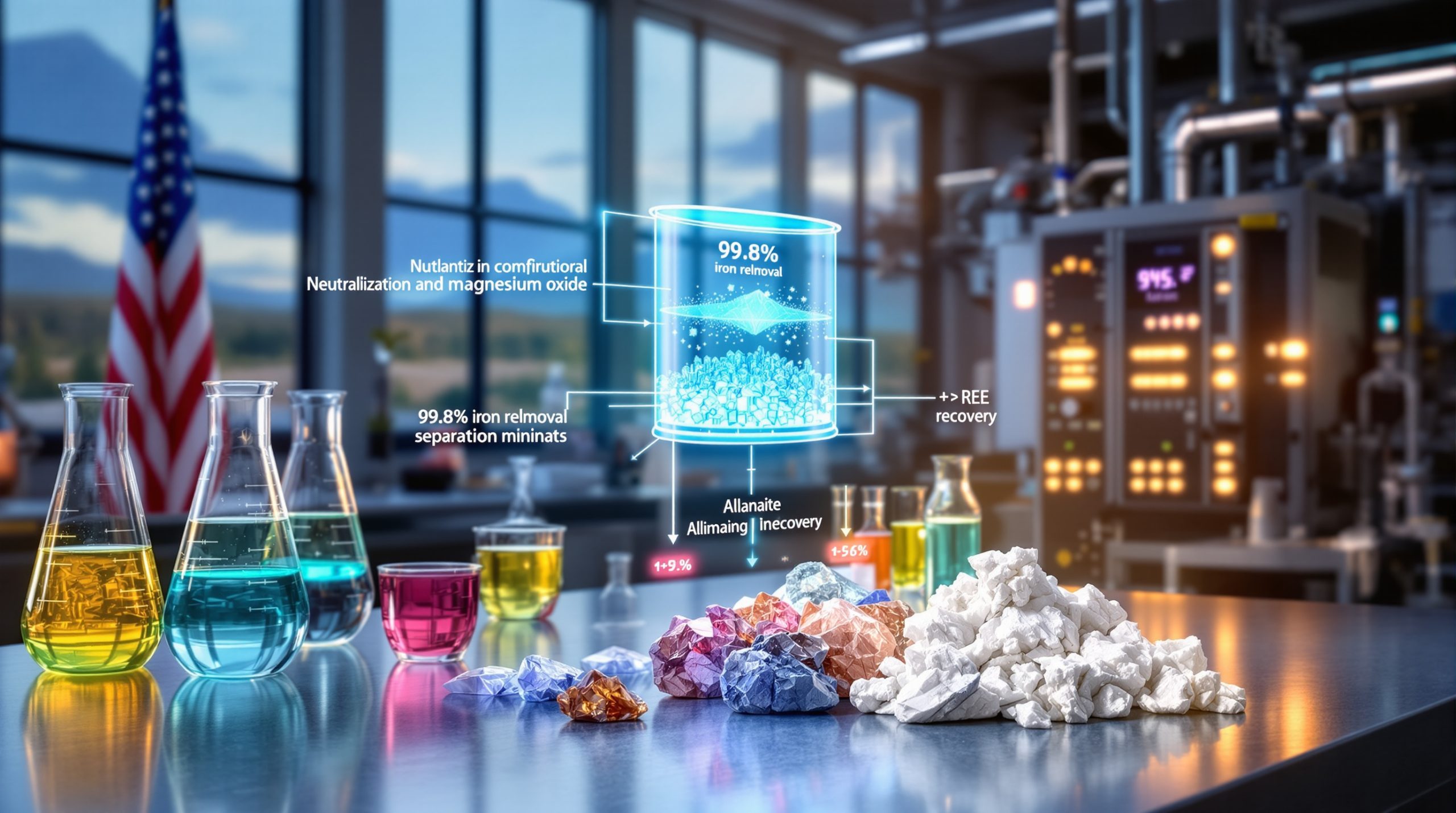Optimizing Comminution Flowsheets: How Integrated Solutions Transform Mineral Processing
Integrated solutions across comminution flowsheets represent a holistic approach to mineral processing that combines multiple technologies, control systems, and design philosophies to optimize efficiency throughout the entire crushing and grinding circuit. Unlike traditional approaches that treat each component as a separate entity, integrated solutions view the comminution circuit as an interconnected ecosystem where improvements in one area can enhance performance across the entire process.
These solutions incorporate advanced equipment technologies working in harmony, intelligent control systems for real-time optimization, complementary components designed to enhance overall performance, energy-efficient alternatives to traditional grinding methods, and comprehensive service support across the entire flowsheet.
The Evolution of Comminution Technology
Traditional comminution circuits have historically relied on energy-intensive processes like semi-autogenous grinding (SAG) mills and ball mills. However, rising energy costs and sustainability concerns have driven industry evolution trends toward more efficient alternatives:
- 1990s: Focus on individual equipment optimization
- 2000s: Introduction of high pressure grinding rolls (HPGRs) as energy-efficient alternatives
- 2010s: Development of advanced control systems and sensors
- 2020s: Shift toward fully integrated solutions with complementary technologies
This evolution has transformed how mining operations approach comminution, with leading equipment manufacturers now offering comprehensive solutions that address the entire flowsheet rather than isolated components.
Why Are Integrated Solutions Transforming Mining Operations?
Energy Efficiency Advantages
Energy consumption represents one of the largest operational costs in mineral processing. Integrated comminution solutions can significantly reduce these costs:
| Traditional Circuit | Integrated Circuit | Energy Savings |
|---|---|---|
| SAG mill + ball mill | Crusher + HPGR + screen + ball mill | 15-25% |
| Primary crusher + SAG mill | Multi-stage crushing + HPGR | 20-30% |
The rising cost of electricity across Africa and globally has made these energy savings increasingly valuable to mining operations. For example, an integrated circuit using HPGRs can reduce power consumption by up to 30% compared to conventional SAG mill circuits.
According to industry research published in Minerals Engineering, comminution accounts for approximately 2-3% of global electricity consumption and 30-50% of total mine site energy use. With such significant energy requirements, even modest efficiency improvements can translate to substantial cost savings.
Improved Process Performance
Integrated solutions deliver performance benefits beyond energy savings:
- Enhanced particle size distribution: More consistent product size for downstream processing
- Increased throughput: Optimized circuits can process more material with the same equipment footprint
- Reduced wear and maintenance: Complementary technologies distribute workload more effectively
- Better recovery rates: Improved liberation of valuable minerals through optimized grinding
These performance improvements translate directly to operational efficiency and profitability. Research published in peer-reviewed mining engineering literature indicates that the combination of crushing and HPGR technology ahead of ball mills can achieve specific energy reductions of 20-30% while simultaneously improving throughput by 10-15% in hard rock applications.
What Components Make Up an Effective Integrated Solution?
High Pressure Grinding Rolls (HPGRs)
HPGRs represent a cornerstone technology in modern integrated comminution solutions. These machines apply high pressure between two counter-rotating rolls to crush material more efficiently than conventional methods.
Key advantages include:
- 15-30% lower energy consumption compared to traditional grinding circuits
- Enhanced micro-fracturing that improves downstream liberation
- Lower water consumption compared to wet grinding processes
- Reduced wear costs through optimized pressure distribution
Leading manufacturers have continued to innovate in HPGR technology, with the latest generations featuring improved control systems, wear protection, and integration capabilities.
The global HPGR market was valued at approximately USD 231.5 million in 2022 and is projected to reach USD 346.8 million by 2028, growing at a CAGR of 7.0%, demonstrating the increasing adoption of this technology.
HPGRs operate by applying high pressure (50-300 MPa) between two counter-rotating rolls to induce inter-particle breakage, creating micro-cracks that improve downstream grinding efficiency. This micro-fracturing effect is a key differentiator that makes HPGRs particularly valuable in hard rock applications.
Advanced Screening Technology
Modern vibrating screens play a crucial role in integrated comminution circuits, working in harmony with crushers and HPGRs to optimize particle classification and circuit efficiency.
Recent innovations include:
- Elite double-deck banana screens: Providing high-capacity screening for large crushing plants
- Advanced exciter technology: Generating forces exceeding 1 megaton to handle higher throughputs
- Customized screen media: Engineered specifically for different applications and feed characteristics
- Intelligent control systems: Adjusting screen parameters based on feed conditions
These screening technologies ensure optimal particle size distribution throughout the circuit, preventing overgrinding and improving energy efficiency.
Banana screens feature a variable slope angle (typically 35-45° at feed end, decreasing to 10-25° at discharge), which provides higher capacity compared to horizontal screens (20-40% increase), better stratification of feed material, and reduced screen media wear at discharge end.
Complementary Crushing Equipment
Integrated solutions incorporate advanced crushing technology designed to work seamlessly with HPGRs and screens:
- Primary jaw crushers: Optimized for initial size reduction with improved liner designs
- Secondary cone crushers: Featuring enhanced control and lubrication systems
- Tertiary crushing stages: Precisely calibrated to prepare feed for HPGRs
By carefully matching crusher characteristics to downstream equipment, integrated solutions maximize overall circuit performance and minimize bottlenecks.
How Do Control Systems Enhance Integrated Solutions?
Intelligent Process Control
Modern integrated comminution circuits leverage advanced control systems that optimize performance across the entire flowsheet:
- Real-time monitoring: Continuous measurement of critical parameters
- Predictive analytics: Anticipating maintenance needs and performance issues
- Automated adjustments: Optimizing equipment settings based on feed characteristics
- Circuit-wide optimization: Balancing performance across all components
These control systems transform isolated pieces of equipment into a coordinated system that responds dynamically to changing conditions.
Modern comminution control systems typically incorporate load cells for measuring mill/crusher loads, power draw monitoring, particle size analyzers (PSA), density/flow measurements for slurry streams, and vibration monitoring for equipment health.
Data-Driven Optimization
The integration of data analytics into comminution circuits enables continuous improvement:
- Historical performance analysis identifies optimization opportunities
- Predictive models anticipate the impact of feed variations
- Machine learning algorithms optimize circuit parameters
- Digital twins simulate potential improvements before implementation
This data‑driven operations approach ensures that integrated solutions continue to deliver value throughout their operational life.
The global smart mining market was valued at approximately USD $14.4 billion in 2022 and is projected to grow at a CAGR of 16.6% through 2030, with automation and AI in mining being key growth drivers.
What Are the Implementation Challenges of Integrated Solutions?
Capital Investment Considerations
While integrated solutions offer significant operational benefits, they often require substantial initial investment:
- Retrofitting existing plants may present space and integration challenges
- New equipment procurement represents significant capital expenditure
- Control system integration requires specialized expertise
- Training and operational transition costs must be considered
However, the long-term operational savings typically justify these initial investments, with many operations achieving payback periods of 2-5 years.
Historical data indicates that HPGR capital costs have been 30-40% lower than equivalent SAG mill installations for similar throughputs, though this advantage must be weighed against the cost of additional crushing and screening equipment in the integrated circuit.
Operational Transition Management
Implementing integrated solutions requires careful management of the transition process:
- Operator training for new technologies and control systems
- Maintenance team upskilling for advanced equipment
- Process engineering adjustments to optimize the new flowsheet
- Production continuity planning during implementation
Successful implementations typically involve close collaboration between equipment suppliers and mine operations teams throughout this transition.
Key engineering considerations for retrofitting existing plants include foundation requirements (HPGRs require significant structural support), footprint constraints (HPGRs typically require less space than SAG mills but more than originally allocated for secondary crushing), circuit water balance modifications, and electrical infrastructure capacity.
How Are Integrated Solutions Supporting Sustainability Goals?
Environmental Impact Reduction
Integrated comminution solutions contribute to mining sustainability transformation in several ways:
- Reduced energy consumption: Lower carbon footprint from more efficient grinding
- Decreased water usage: Some integrated circuits enable partial dry processing
- Smaller footprint: More efficient equipment often requires less physical space
- Reduced waste generation: Better control leads to less overgrinding and fines production
These environmental benefits align with the industry's increasing focus on sustainable operations and ESG (Environmental, Social, and Governance) performance.
HPGR circuits can operate at moisture contents of 3-6%, compared to conventional grinding circuits requiring 60-75% solids (25-40% water by mass) in the mill feed. This significant difference in water requirements is particularly valuable in water-scarce mining regions.
Future-Proofing Operations
As regulatory requirements and stakeholder expectations continue to evolve, integrated solutions help mining operations prepare for the future:
- Energy efficiency improvements hedge against rising electricity costs
- Reduced environmental impact helps meet tightening regulations
- Advanced control systems enable adaptation to changing ore characteristics
- Comprehensive solutions support long-term operational sustainability
South Africa has experienced significant electricity challenges, with Eskom implementing load shedding (rolling blackouts) intermittently since 2007, intensifying from 2019-2024. Industrial electricity tariffs increased by approximately 15-20% annually during 2022-2024. These cost pressures make energy efficiency a critical consideration for mining operations.
Case Study: Implementing Integrated Solutions in Hard Rock Mining
A major copper operation in Zambia recently implemented an integrated comminution solution featuring:
- Large ENDURON® Elite double-deck banana screens
- Advanced LTX exciters generating over 1 megaton of force
- High-pressure grinding rolls replacing traditional SAG mills
- Comprehensive control system integration
The results demonstrated the value of this approach:
- 22% reduction in energy consumption
- 15% increase in throughput capacity
- Improved particle size distribution for downstream flotation
- Enhanced maintenance scheduling through predictive analytics
This implementation exemplifies how integrated solutions can transform comminution performance in challenging hard rock applications.
A similar documented case study from the Morenci Copper Mine in Arizona (Freeport-McMoRan), which implemented HPGR technology in 2007-2008, reported a 13% reduction in total grinding circuit specific energy, increased copper recovery by approximately 2-3%, and achieved investment payback in approximately 2.5 years.
How to Evaluate Integrated Solution Providers?
Key Selection Criteria
When evaluating providers of integrated comminution solutions, mining operations should consider:
- Technology portfolio breadth: Does the provider offer all key components?
- Integration expertise: What experience do they have in designing complete circuits?
- Service network: Can they support the entire solution throughout its lifecycle?
- Innovation track record: Are they continuously improving their technologies?
- Reference installations: Have they successfully implemented similar solutions?
Mining equipment reliability and availability are critical operational metrics, with unplanned downtime costs ranging from USD $50,000 to $500,000 per hour depending on mine size and commodity prices. This makes reliable service support and parts availability essential considerations when selecting a technology provider.
The Importance of Service Infrastructure
The value of integrated solutions extends beyond the equipment itself to include comprehensive service support:
- Local service presence within reasonable proximity to operations
- Spare parts availability for all system components
- Technical expertise for troubleshooting across the entire flowsheet
- Ongoing optimization support to maximize long-term performance
Providers with extensive global service networks can typically deliver superior support for integrated solutions.
Key components of comminution equipment service infrastructure include spare parts warehousing and logistics, field service engineers with specialized training, condition monitoring and diagnostics capabilities, maintenance planning and shutdown support, and wear parts optimization programs.
What Does the Future Hold for Integrated Comminution?
Emerging Technologies
The next generation of integrated comminution solutions will likely incorporate:
- Advanced AI and machine learning: Further optimizing circuit performance
- Autonomous operation capabilities: Reducing human intervention requirements
- Enhanced sensor technologies: Providing more detailed real-time feedback
- Energy recovery systems: Capturing and reusing energy within the circuit
These technologies will continue to push the boundaries of efficiency and performance in mineral processing.
Research in mineral processing automation indicates that advanced control strategies (such as Model Predictive Control) can improve grinding circuit stability, reduce variability in product size by 10-20%, and enable operation closer to constraint limits.
Integration Beyond Comminution
Future solutions will increasingly extend integration beyond traditional comminution boundaries:
- Connecting crushing and grinding with downstream flotation processes
- Integrating ore sorting technologies earlier in the flowsheet
- Linking comminution control systems with mine planning and scheduling
- Optimizing the entire value chain from mine to final product
This broader integration perspective represents the next frontier in mineral processing optimization.
Conclusion: The Strategic Value of Integrated Comminution Solutions
Integrated solutions across comminution flowsheets represent a paradigm shift in mineral processing. By combining advanced technologies, intelligent control systems, and comprehensive service support, these solutions deliver transformative benefits:
- Significant energy cost reductions
- Enhanced operational performance
- Improved environmental sustainability
- Future-proofed operations
For mining operations facing rising energy costs, tightening environmental regulations, and challenging ore bodies, integrated comminution solutions offer a strategic pathway to sustainable competitiveness.
As the industry continues to evolve, the companies that embrace these integrated approaches will likely gain significant advantages in operational efficiency, cost structure, and environmental performance.
The mining industry has increasingly integrated ESG (Environmental, Social, and Governance) metrics into operational and strategic decision-making, with energy efficiency and water consumption being key performance indicators tracked by major mining companies. Integrated comminution solutions directly address these priorities while delivering mining decarbonisation benefits while delivering operational benefits.
Disclaimer: The performance figures and energy savings cited in this article are based on industry case studies and may vary depending on specific ore characteristics, circuit configuration, and operational parameters. Mining companies should conduct detailed feasibility studies to determine the expected benefits for their particular applications.
Want to Stay Ahead of Mining Industry Innovations?
Discover cutting-edge developments in mineral processing and other mining innovations with Discovery Alert's proprietary Discovery IQ model, delivering real-time alerts on significant ASX announcements that could impact your investment decisions. Explore our dedicated discoveries page to see how major mineral discoveries have historically generated substantial returns.




